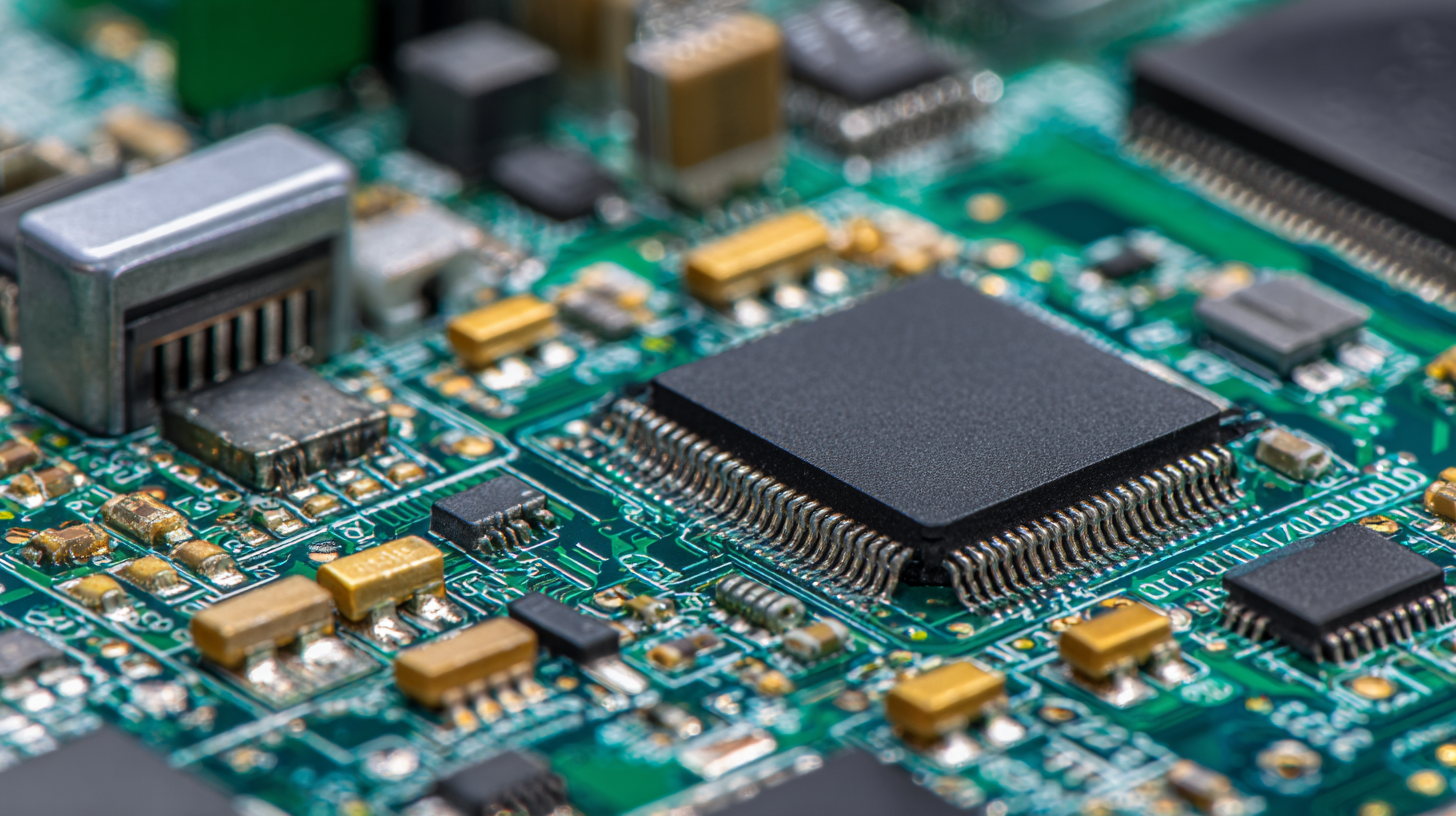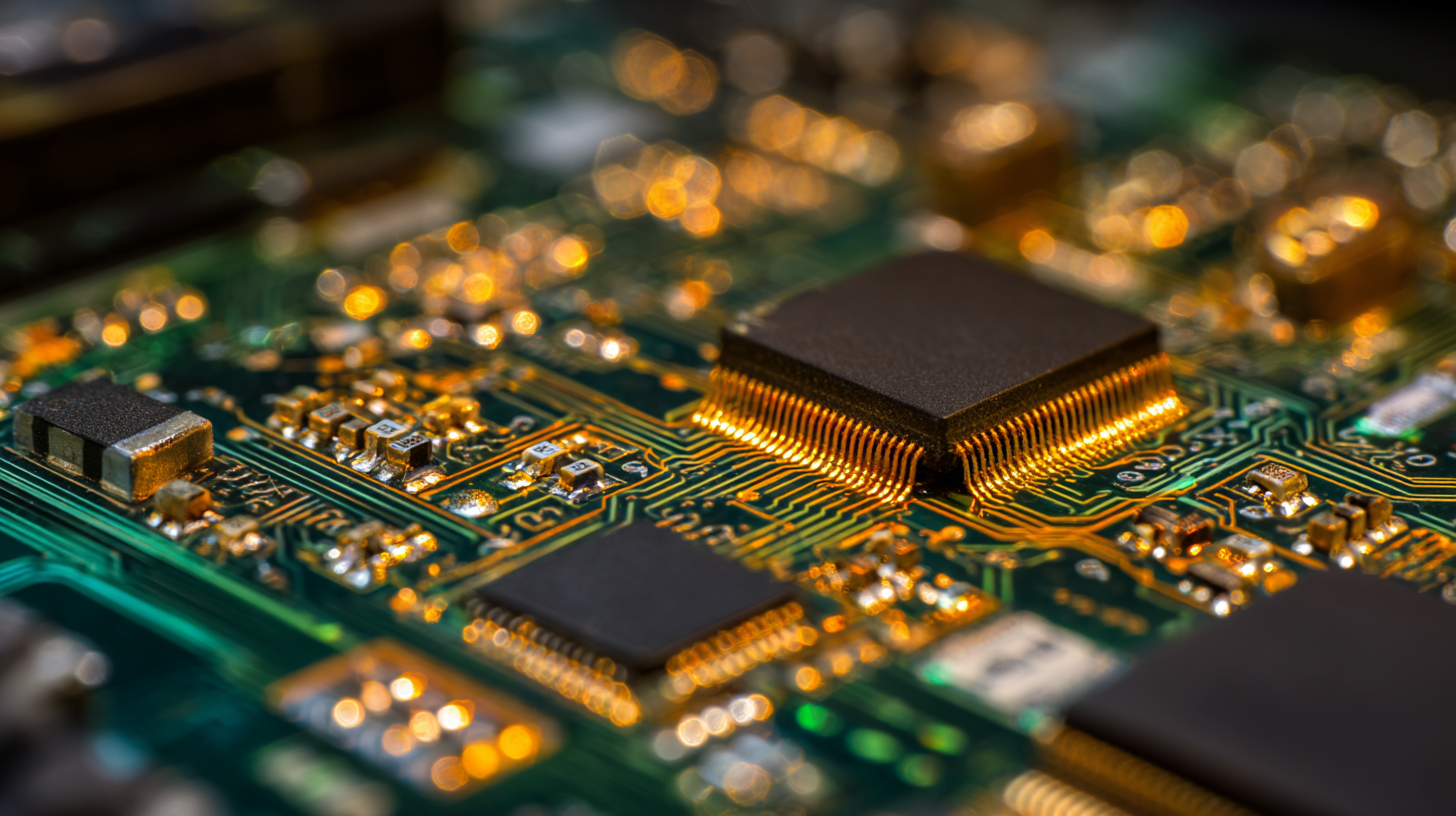Exploring the Unique Features and Applications of the Best Printed Circuit Boards in Global Markets
The global printed circuit board (PCB) market has seen remarkable growth, with projections estimating it to reach a valuation of over $80 billion by 2026, driven by the increasing demand for electronics across various industries. As the centerpiece of electronic device assembly, the Print PCB Board plays a crucial role in ensuring reliable connectivity and performance. China's manufacturing prowess has positioned it as a leading player in this landscape, with reports indicating that over 40% of the world's PCBs are produced there. This dominance is attributed to advanced production techniques, strong supply chain networks, and a focus on quality assurance, meeting the stringent demands of global markets. As we delve into the unique features and applications of the best printed circuit boards, we will explore how Chinese innovations in this sector are not just meeting local needs but are also setting trends that resonate worldwide.

The Evolution of Printed Circuit Board Technology in China’s Manufacturing Sector
The evolution of printed circuit board (PCB) technology has significantly influenced China's manufacturing sector, marking its transition from basic production to sophisticated, high-tech applications. With the rapid advancement of electronics, Chinese manufacturers have adapted to meet the demands for more complicated and multi-layered PCB designs. This shift not only reflects technological progress but also demonstrates China's commitment to becoming a leader in the global electronics market.
Significantly, Chinese PCB manufacturers have invested heavily in research and development, enabling them to innovate and refine production techniques. The integration of automation and artificial intelligence in PCB fabrication processes has enhanced efficiency and accuracy, ensuring that products can meet international standards. As a result, China has become a dominant player in the global PCB landscape, catering to various sectors such as telecommunications, automotive, and consumer electronics. This remarkable evolution illustrates how China's manufacturing capabilities are continuously evolving, driving the future of PCB technology on a global scale.
Key Characteristics that Make Chinese PCBs Stand Out in Global Markets
The global demand for printed circuit boards (PCBs) continues to surge, with the market projected to reach approximately $80 billion by 2026, according to a recent report by Research and Markets. Among the various players in this field, Chinese manufacturers have emerged as leaders, thanks to their unique characteristics and capabilities. One standout feature is China's ability to produce high-density interconnect (HDI) PCBs at a competitive price, fulfilling the advancing requirements of electronics in smartphones, computers, and IoT devices. In fact, a report from IPC estimates that the HDI segment is expected to grow at a CAGR of over 10% from 2021 to 2026, emphasizing the significant role of Chinese firms in this sector.
Additionally, the integration of advanced manufacturing technologies, such as automated production lines and the Internet of Things (IoT), has allowed Chinese PCB manufacturers to maintain stringent quality control while scaling production. According to a study by Mordor Intelligence, Chinese firms account for about 40% of the global PCB production volume, illustrating their dominance. This combination of cost-efficiency, technological integration, and adherence to international quality standards positions Chinese PCBs as a preferred choice in the global market, thus playing a crucial role in the supply chains of various electronics sectors.
Exploring the Unique Features and Applications of the Best Printed Circuit Boards in Global Markets
| Characteristic |
Description |
Application Area |
Market Region |
| High Thermal Conductivity |
Ability to dissipate heat effectively |
LEDs, Power Electronics |
Global |
| Fine Line and Space Technology |
Capability to produce smaller and denser circuits |
Mobile Devices, Medical Equipment |
North America, Europe |
| Flexible PCB Design |
Flexible materials that can bend and twist |
Wearables, Robotics |
Asia, Europe |
| Layer Multilayer Technology |
Ability to stack multiple circuits for dense designs |
Consumer Electronics, Telecommunications |
Worldwide |
| Cost-Effectiveness |
Affordable production options without sacrificing quality |
Small Goods Manufacturing, Automotive |
Asia, Africa |
Diverse Applications of Chinese PCBs Across Various Industries
In the ever-evolving landscape of global industries, Chinese printed circuit boards (PCBs) are increasingly recognized for their diverse applications and remarkable adaptability. They play a critical role in sectors ranging from consumer electronics to advanced automotive technologies. The rapid advancement of self-emissive display technologies such as Mini/Micro LED and Micro OLED has further fueled the demand for PCBs, as these displays require precise and reliable circuit solutions to support their intricate designs.
**Tips:** When exploring the applications of PCBs, consider the specific requirements of each industry. For the consumer electronics sector, look for PCBs that offer flexibility and miniaturization, while in automotive applications, durability and thermal management become crucial. Understanding these nuances can significantly enhance design outcomes.
The global PCB market is projected to experience robust growth, driven by technological advancements and increasing tariff challenges. This expansion reflects not only the rising demand for sophisticated electronics but also the strategic positioning of Chinese manufacturers to innovate and meet diverse market needs. Recognizing trends such as the rise of humanoid robots and the development of rigid-flex PCBs can provide businesses with critical insights for future investments and product development.
**Tips:** Keep an eye on emerging trends in PCB technologies, like substrate-like structures that promise high performance with a compact footprint. Staying informed will help businesses adapt to market fluctuations and maximize their competitive edge.
Exploring the Diverse Applications of Chinese PCBs Across Various Industries
The Role of Innovation in Enhancing PCB Export Competitiveness
Innovation plays a pivotal role in enhancing the competitiveness of printed circuit board (PCB) exports. As global demand for electronics surges, countries like India are recognizing the necessity of adopting innovative strategies to keep pace with market leaders. According to analysts, India's electronics manufacturing services industry is projected to grow significantly, propelled by an increase in outsourcing from Original Equipment Manufacturers (OEMs). By leveraging innovative practices in PCB production, India can position itself as a strong contender in the global market, much like Japan's focus on cutting-edge technology or Taiwan's efficient foundry model.
Furthermore, as countries navigate the complexities of the semiconductor industry, the emphasis on incorporating advanced technologies in PCB manufacturing becomes ever more critical. Reports suggest that countries aiming to strengthen their positions in the market must focus on areas such as value chain integration and process optimization. This is evident in the efforts of various nations, including the Dominican Republic, which is exploring its potential in global semiconductor and PCB value chains. Embracing innovation not only enhances manufacturing capabilities but also opens new avenues for collaboration and growth, making it essential for countries like India to carve a unique path that aligns with their specific strengths and market needs.

Future Trends for Printed Circuit Boards: Opportunities and Challenges in Global Trade
The printed circuit board (PCB) industry is on the cusp of significant transformation, driven by rapid technological advancements and shifting global trade dynamics. According to a recent report by Technavio, the global PCB market is expected to grow at a CAGR of 4.26% from 2021 to 2025, reaching an estimated value of $82 billion by 2025. This growth is fueled by increasing demand in sectors such as consumer electronics, automotive, and telecommunications, where the integration of advanced electronics is paramount.
However, with these opportunities come challenges, particularly regarding supply chain disruptions and geopolitical tensions. The COVID-19 pandemic has highlighted vulnerabilities in sourcing raw materials and components, prompting many firms to diversify their suppliers. Additionally, increasing trade regulations and tariffs in key markets like the United States and China have created uncertainties for PCB manufacturers. As industries pivot towards more sustainable practices, companies will need to invest in eco-friendly materials and production processes to remain competitive. The dual aspects of opportunity and challenge in the PCB landscape underscore the necessity for strategic adaptation in the pursuit of innovation and market resilience.
